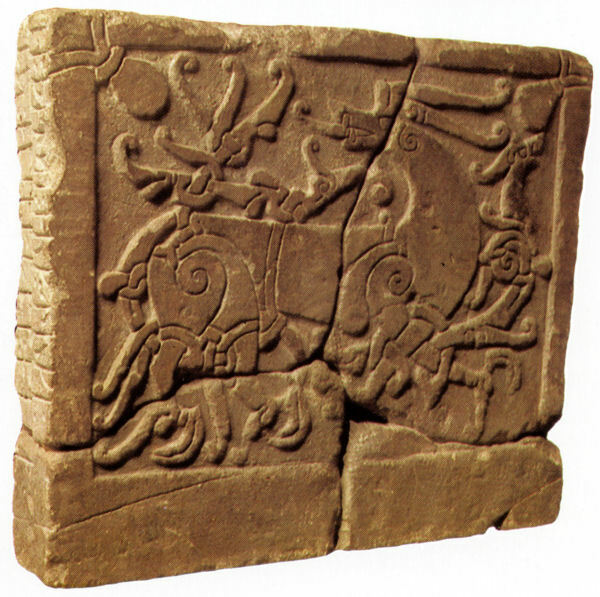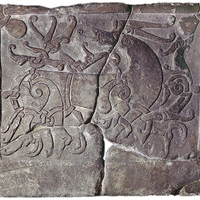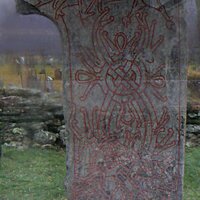Scandinavian tombstone in London
Type:
Grave markers
Date:
Early to mid-eleventh century
Location or Findspot (Modern-Day Country):
England
Medium:
Limestone
Dimensions:
47.2 × 56.7 × 10.2 cm
Description:
This limestone slab with a runic inscription was found in the cemetery of St. Paul's Cathedral in London in the mid-nineteenth century. Its style is called Ringerike, after the site in Norway where it was first identified on carved stones. Works in this style feature great dragonlike beasts and swirling tendrils that create complex patterns. These carvings, on stone and wood, were produced between about 980 and 1070, but few examples have been found outside of Scandinavia. In the early eleventh century, King Cnut of Denmark (r. 1016–35) conquered southern England, and Danes and Norwegians began to settle in London and elsewhere. Cnut—whose mother was from Poland and father from Denmark—was a Christian convert who tolerated the traditional polytheistic beliefs of his subjects while also making large donations to English churches, especially Winchester and Canterbury. This stone likely marked the grave of a Scandinavian immigrant to England. Its two lines of runic text (on the left side) say, in Old Norse, "Ginna and Toki had this stone laid," but for whom this was done (perhaps a family member) is unknown. The tombstone still has traces of red and black pigment.
Relevant Textbook Chapter(s):
6
Repository and Online Resources:
• The Ringerike-style tombstone is now in the Museum of London.
Image Credits:
Wikimedia Commons




